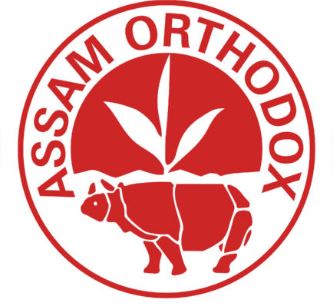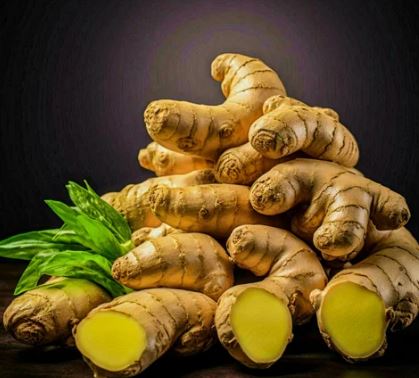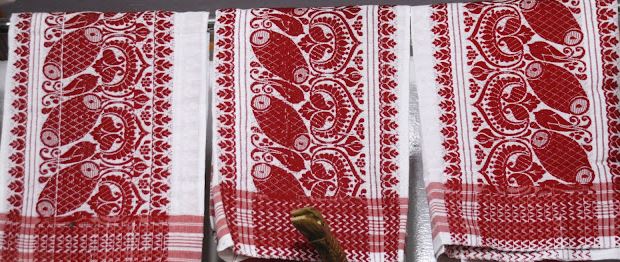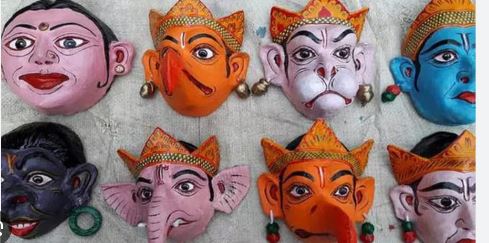GI Tag of Assam List: Assam is home to 41 Geographical Indication (GI) tag items, each showcasing the state’s rich cultural heritage and distinctive products. These GI tags highlight Assam’s diverse traditions, crafts, and agricultural produce. Out of the 40 GI-tagged items, 20 represent Assamese culture, while the remaining 21 reflect the heritage of the Bodos, the state’s largest tribal community.
Explore the list of Assam’s recognized products in this article.
GI Tag of Assam List 2025
GI Tag of Assam List 2025: Assam has received the Geographical Indication (GI) tag for nineteen traditional products and crafts. Six of these are the Assam Bihu Dhol, Assam Jaapi, Sarthebari Metal Craft, Panimeteka craft (water hyacinth), Mising taat (handloom), and the Asharikandi terracotta works.
While the remaining 21 items are linked to the cultural heritage of the Bodos, the largest tribal group in the state. These include traditional items like dokhona, eri silk, jwmgra, gamsa, three agricultural products – keradapini, khardwi, gongar dunjia, and six musical instruments – kham, serja, sifung, thorkha, gongona, jotha.
With this recognition, Assam has 40 GI tags from Apr 2007 till now.
Click on the Bodo Traditional Items GI Tags for more details on 21 products.
Total GI Tag in Assam Overview 2025
| State | Assam |
|---|---|
| Bodo Community GI Tag | 21 |
| Assamese GI Tag | 20 |
| TOTAL GI Tag | 41 |
List of GI tag of Assam 2025 Brief Details
Now, let look at the details of the recently granted GI tags for products from Assam.
1. Assam Bihu Dhol
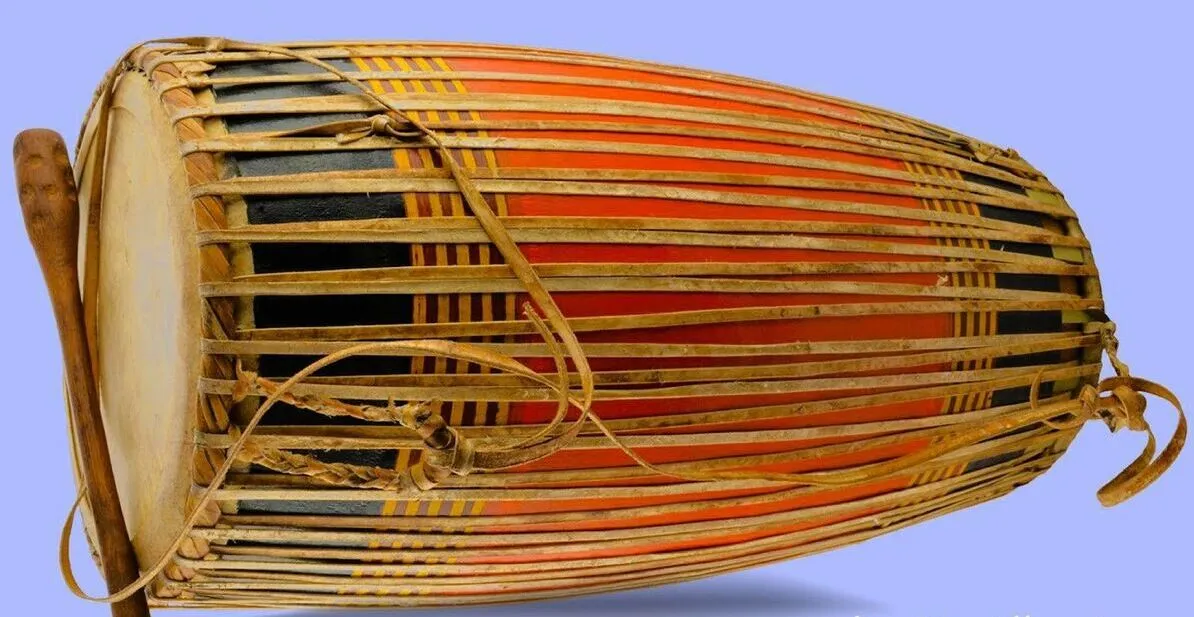
Assam Bihu Dhol is a musical instrument. It is a drum made from a single piece of top-notch wood shaped like a barrel.
2. Assam Jaapi
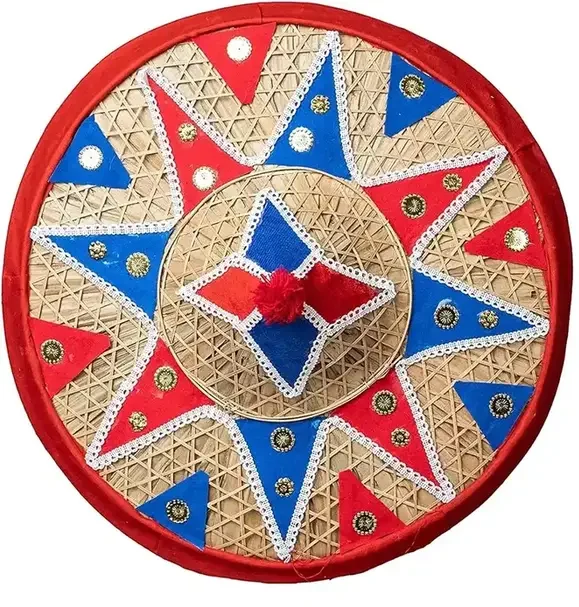
Assam Jaapi is a traditional hat made from tokou paat (a large palm leaf), and tightly woven bamboo or cane. The name “jaapi” comes from “jaap,” which refers to a bunch of tokou leaves.
3. Sarthebari Metal Craft

Sarthebari Metal Craft specializes in crafting high-quality brass and copper kitchenware, ornaments, and ceremonial items.
4. Pani Mateka Craft
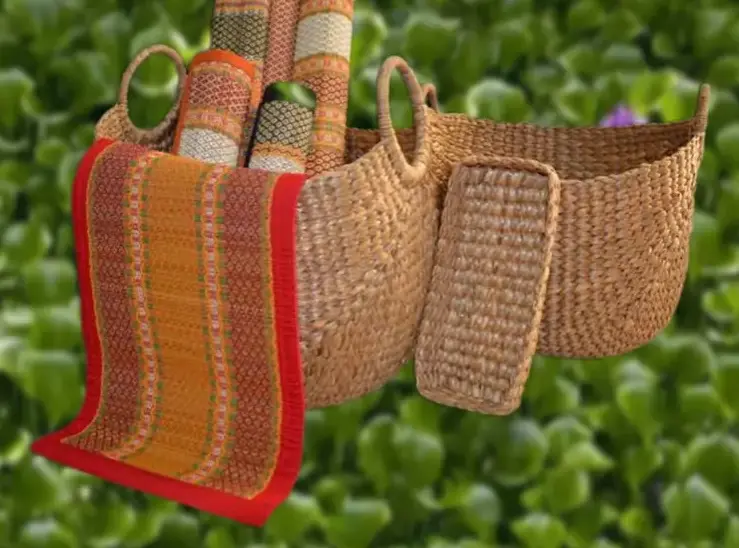
Pani Mateka, also called water hyacinth, is used by expert craftsmen to make woven water pots from cane. This material is also used to make eco-friendly handicrafts, mats, and various other items.
5. Mishing Taat (Handloom)
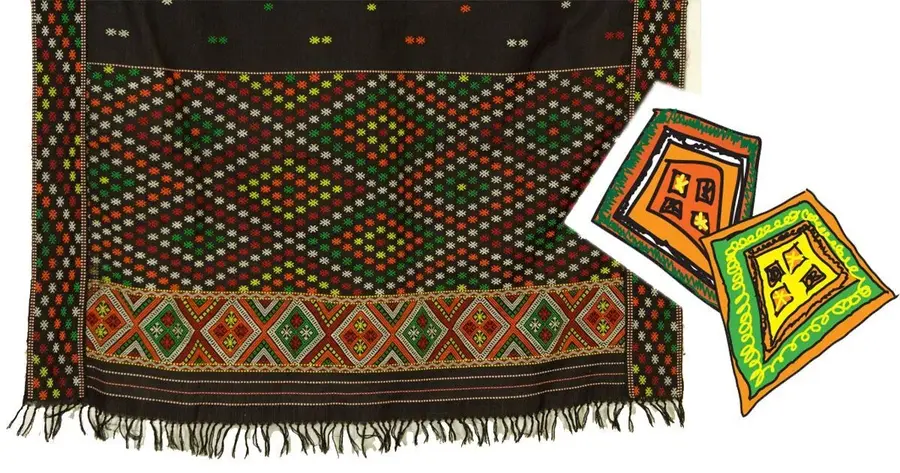
The Mishing people in Assam are known for making beautiful hand-woven items. Mishing women use backstrap loom to make traditional textiles like shawls, scarves, and other woven goods. These items have vibrant colors and unique designs that represent the Mishing culture.
6. Asharikandi Terracotta Crafts
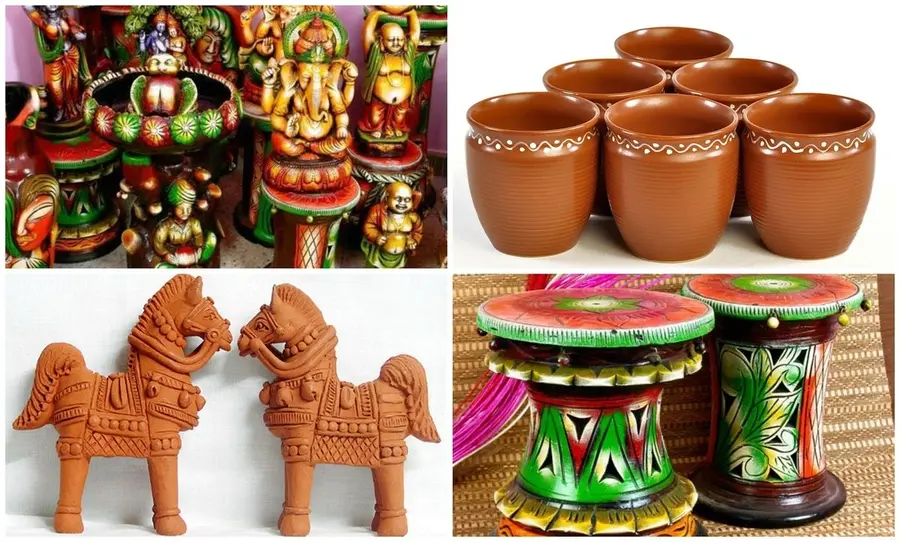
Asharikandi is famous for its traditional terracotta and pottery crafts, which are influenced by factors like Hiramati, the materials used, and traditional tools. The terracotta made in Asharikandi has an age-old tradition of skilled pottery craftsmanship, often promoting animals, and mythological designs to preserve ancient methods.
7. Muga Silk of Assam GI Tag
Muga silk is a distinctive variety from Assam, celebrated for its natural golden sheen and exceptional durability. Produced exclusively by the Antheraea assamensis silkworm, this silk is deeply embedded in the region’s cultural and economic fabric. In recognition of its uniqueness, Muga silk was granted the Geographical Indication (GI) tag in 2006-2007, with GI tag number 55.
8. Assam Orthodox Logo GI Tag
The “Assam (Orthodox) Logo” GI tag represents the unique Assam Orthodox Tea, renowned for its distinct flavor and production process, which are deeply influenced by Assam’s climate and geography. This tea was awarded the Geographical Indication (GI) tag in 2007-18, with GI tag number 115.
9. Muga Silk of Assam Logo GI Tag
The “Muga Silk of Assam” received its GI tag in 2014, with GI tag number 384, serving as an official mark of authenticity for Muga silk products. However, the original GI tag for Muga silk was awarded in 2007, recognizing the unique qualities of this golden silk, which is exclusively produced in Assam by silkworms that feed on local plants.
10. Assam Karbi Anglong Ginger GI Tag
Assam Karbi Anglong Ginger is renowned for its superior quality and high fiber content. It is primarily cultivated in the Karbi Anglong district, where the ideal soil and climate conditions contribute to its exceptional growth. Compared to other ginger varieties, Karbi Anglong ginger is larger, more aromatic, and more fibrous, making it highly valued in both culinary and medicinal applications. The GI tag for Assam Karbi Anglong Ginger was awarded in 2015, with GI tag number 435.
11. Tezpur Litchi GI Tag
Tezpur Litchi, celebrated for its unique sweetness, juiciness, and distinctive flavor, was granted a Geographical Indication (GI) tag in 2015, with GI tag number 438. This variety of litchi is primarily cultivated in the Tezpur region of Assam, where the favorable climate and soil conditions contribute to its exceptional quality.
12. Joha Rice of Assam GI Tag
Joha rice, a unique variety from Assam, is known for its small grain size, soft texture, and aromatic fragrance. It holds significant economic value in the region, cherished for its distinctive qualities. Joha rice was awarded the Geographical Indication (GI) tag in 2017, with GI tag number 439.
13. Boka Chaul GI Tag
Boka Chaul, a unique variety of rice from Assam, is a semi-sticky rice known for its distinctive edible texture even without cooking. Often referred to as “soft rice” or “mud rice,” Boka Chaul can be prepared by simply soaking it in water at room temperature for an hour, after which it is ready to eat. Boka Chaul was awarded the Geographical Indication (GI) tag in 2018, with GI tag number 558.
14. Kaji Nemu GI Tag
Kaji Nemu is a distinctive seedless lemon variety from Assam, known for its oblong shape, juicy pulp, and mild tanginess. Unlike regular lemons, Kaji Nemu has a subtle sweetness, making it highly sought after in culinary applications, particularly in Assamese cuisine. In 2019, Kaji Nemu was awarded a Geographical Indication (GI) tag, with GI tag number 609.
15. Chokuwa Rice of Assam GI Tag
Chokuwa rice from Assam is a unique variety that becomes edible with minimal cooking. Unlike Boka Chaul, which only requires soaking, Chokuwa rice typically needs a brief boiling period. The Chokuwa Rice of Assam was awarded the Geographical Indication (GI) tag in 2020, with GI tag number 572.
16. Judima GI Tag
Judima, a traditional rice wine made by the Dimasa tribe in Assam, holds the distinction of being the first alcoholic beverage from northeastern India to receive Geographical Indication (GI) status. Judima was awarded the GI tag in 2020, with GI tag number 643.
17. Gamosa of Assam GI Tag
The Gamosa, an iconic handwoven textile from Assam, was awarded the Geographical Indication (GI) tag in 2022, with GI tag number 594. It is typically a rectangular piece of white cloth with red borders. Gamosas are widely used as towels, cultural symbols, or gifts, often presented as marks of respect.
18. Majuli Mask of Assam GI Tag
The Majuli Mask, a traditional craft of Assam, is practiced on Majuli Island in the Brahmaputra River. This art form is primarily associated with the neo-Vaishnavite monasteries, known as “Satras,” where artisans called “Mukha Bhariyas” create masks depicting characters from Hindu mythology, such as those found in the Ramayana and Mahabharata. The Majuli Mask of Assam was awarded the Geographical Indication (GI) tag in 2024, with GI tag number 939.
19. Assam Majuli Manuscript Painting
Majuli manuscript painting in Assam is an ancient art form practiced on Majuli Island, where artisans create intricate and vibrant illustrations on handmade manuscripts. This art form is deeply rooted in the neo-Vaishnavite culture and heritage, established by the saint-scholar Srimanta Sankardev. The Assam Majuli Manuscript Painting was awarded the Geographical Indication (GI) tag in 2024, with GI tag number 940.
20. Axomiya Gohona (Assamese Jewellery)

The Geographical Indication (GI) tag has been granted to Axomiya Gohona (Assamese Jewellery), recognizing it as a unique traditional craft of Assam. This GI tag helps preserve the rich cultural heritage of Assamese handcrafted jewellery and provides legal protection against imitation, ensuring economic and cultural value for local artisans.
What is GI Tags?
Geographical Indications (GI) tags certify that a product originates from a specific geographical area and has unique quality and cultural attributes. These tags enhance customers trust in the product’s authenticity and quality, while also gives local producers a better chance to compete in the market and keeps traditional ways of making products alive.
What are the benefits of GI Tags?
The Geographical Indication (GI) tags offer numerous advantages. Some are-
- GI tags keep unique and special products safe.
- GI tags stop people from copying and using a region’s culture without permission.
- GI tags help old traditions continue.
Assam GI Tags From April 2007 – March 2024
| Sl. No | Geographical Indications | Application No. | Category |
|---|---|---|---|
| 1 | Muga Silk of Assam | 55 | Handicraft |
| 2 | Assam (Orthodox) | 115 &118 | Agricultural |
| 3 | Muga Silk of Assam (Logo) | 384 | Handicraft |
| 4 | Assam Karbi Anglong Ginger | 435 | Agricultural |
| 5 | Tezpur Litchi | 438 | Agricultural |
| 6 | Joha Rice of Assam | 439 | Agricultural |
| 7 | Boka Chaul | 558 | Agricultural |
| 8 | Kaji Nemu | 609 | Agricultural |
| 9 | Chokuwa Rice of Assam | 572 | Agricultural |
| 10 | Judima | 643 | Manufactured |
| 11 | Gamosa of Assam | 594 | Handicraft |
| 12 | Assam Bihu Dhol | 1002 | Handicraft |
| 13 | Assam Jaapi | 979 | Handicraft |
| 14 | Sarthebari Metal Craft | 1013 | Handicraft |
| 15 | Pani Mateka Craft | 1003 | Handicraft |
| 16 | Mising Handloom Products | 1001 | Handicraft |
| 17 | Assam Asharikandi Terracotta Craft | 980 | Handicraft |
| 18 | Bodo Dokhona | 956 | Handicraft |
| 19 | Bodo Eri Silk | 960 | Handicraft |
| 20 | Bodo Jwmgra | 961 | Handicraft |
| 21 | Bodo Gamsa | 962 | Handicraft |
| 22 | Bodo Keradapini | 963 | Agricultural |
| 23 | Bodo Khardwi | 975 | Manufactured |
| 24 | Bodo Gongar Dunjia | 971 | Agricultural |
| 25 | Bodo Kham | 972 | Handicraft |
| 26 | Bodo Serja | 973 | Handicraft |
| 27 | Bodo Sifung | 974 | Handicraft |
| 28 | Bodo Thorkha | 965 | Handicraft |
| 29 | Bodo Gongona | 977 | Handicraft |
| 30 | Bodo Jotha | 978 | Handicraft |
| 31 | Aronai | 958 | Textiles |
| 32 | Napham | 964 | Food |
| 33 | Onla | 966 | Agriculture |
| 34 | Gwkha – Gwkhwi | 967 | Agriculture |
| 35 | Narzi | 976 | Agriculture |
| 36 | Jou Gwran | 968 | Manufactured |
| 37 | Jou Maibra Bidwi | 970 | Manufactured |
| 38 | Jou Gishi | 969 | Manufactured |
| 39 | Majuli Mask of Assam | 939 | Handicraft |
| 40 | Assam Majuli Manuscript Painting | 940 | Handicraft |
| 41 | Axomiya Gohona (Assamese Jewellery) | 858 | Handicraft |
Important Links
| Official Website | Click Here |
| GI Registration Details PDF | Download Here |
| Bodopedia | Click Here |
| Join Groups | Telegram | WhatsApp | Facebook |
GI Tag of Assam List FAQs
1. How many GI tags has Assam received till now?
Assam has been granted 41 Geographical Indication (GI) tags for its traditional crafts, textiles, and agricultural products. 21 of these tags belong to the Bodo community. Check out this post for the details on these recognitions. These tags, awarded between April 2007 and March 2025.

